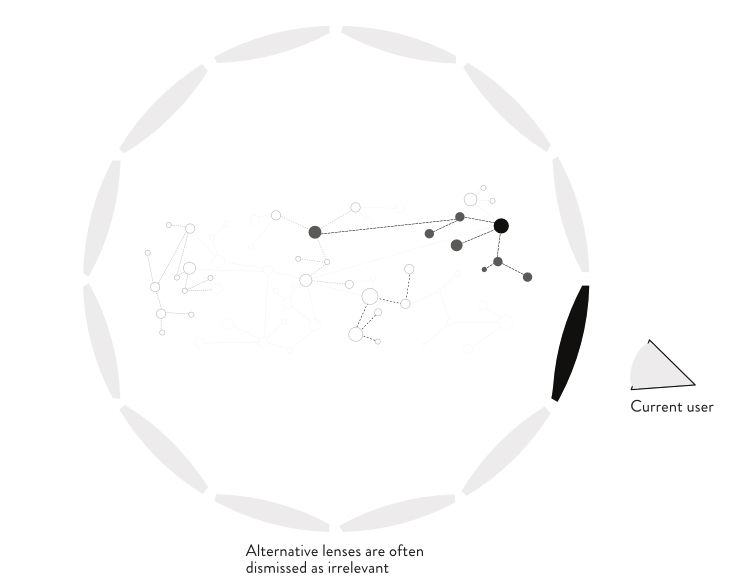User perspective
Of hierarchy as a view into network
A user couldn’t care less about what isn’t in the architecture, unless it’s the thing they are looking to do or use. Missing what they expect to find will result in frustration and even anger, but weeding through too much can do the same thing.
If they are on a search for a thing but not positive it should be in a place, they’ll go somewhere else when they don’t immediately find it.
In other words, if they are looking for pants and the architecture doesn’t include pants where they expect to find them, they’ll move on in the belief that this is not a pants-available place. They are on the information scent, and your information trove doesn’t have it.
Even though you have a network involved, what’s there but not attached to the hierarchical architecture they are looking at right now barely hits their perception, if at all.
A user is more likely to consider all data that is not directly attached to their goal or understanding as ‘junk’.
excluded, implicit process, ouruborus
